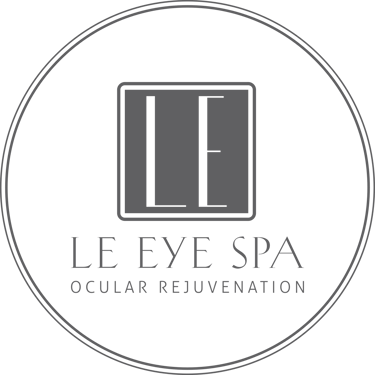Care For Your Ocular Rosacea
IPL: The new standard for the treatment of ocular rosacea.
11/6/20243 min read
Ocular Rosacea Treatment
What is Ocular Rosacea and how does it affect the eyes?
Rosacea is a skin condition that causes red patches, broken capillaries, and red bumps on the skin (1). It is common throughout the body but can affect the face and eye region; thereby being called Ocular Rosacea (1). Those who have facial rosacea often also have ocular rosacea. Common signs are red areas along the face, especially if one is in hot temperatures, drinking alcohol, or eating spicy foods. Ocular Rosacea is also linked to Dry Eye Disease (DED). The redness seen in rosacea, is brought on by dilated (expanded and enlarged) blood vessels. These dilated blood vessels carry a greater amount of inflammatory markers and cytokines that can cause inflammation of the eyelid regions.
The glands responsible for producing the oily substance to keep your tears from evaporating are called meibomian glands. The meibum (oil) produced by the meibomian g lands help maintain the stability of the tear film. The increased inflammation seen in rosacea greatly affects the meibomian glands. Once inflamed the meibum produced is diseased and hardened - leading to DED.
Rosacea is commonly treated using Intense Pulsed Light (IPL). It is recommended to have four treatments to start. During this four visit process, the treated rosacea fades over time (1). Other treatment options for Rosacea include oral or topical medications, such as doxycycline, Claravis, brimonidine, and oxymetazoline, however they are not as commonly used due to the advancement of light and laser technologies which is usually a superior treatment.
How does IPL work?
Intense Pulsed Light (IPL) works to treat rosacea and dry eye disease in a two-pronged approach. The intense pulsed light acts to constrict blood vessels (the constricted blood vessels allow for reduced inflammatory markers and reduced inflammation) and to heat the surrounding meibomian glands. It does this by using an arc electric current and applying that energy to the skin (2). This energy is then absorbed by chromophores (a molecule in certain cells that absorb specific wavelengths of energy) after which it causes these chromophore-containing cells to produce heat (2). This added heat acts to melt the clogged meibomian glands (2). This in turn allows for a more stable tear film, and both the treatment of ocular rosacea and DED.
Efficacy?
Studies have shown that IPL reduced the effects of rosacea by 77.8% and that this result was maintained for an average of 51.6 months (4.3 years) after only 4 treatments (1). Additionally, more studies have shown that IPL has been effective in regards to treating DED; these studies suggest that IPL reduces symptoms of dryness (3). As well, it also indicates that those treated with IPL have increased tear stability (3).
Side effects?
IPL has been shown to have minimal side effects, with the majority of side effects being mild temporary redness and minimal pain (2). Other side effects could include crusting or blistering of the skin, but there were none in the referenced studies who had such adverse effects (2).
Conclusion
To conclude, IPL is a great choice for the treatments of both dry eyes and ocular rosacea. It is a great alternative to the usual eye drops and has the added benefit of leaving the skin looking great after as well with results lasting up to 52 months (4.3 years) on average (1).
Written by Midwestern Optometry student, Vinay Naidoo
Citations:
Schroeter, C. A., Haaf-von Below, S., & Neumann, H. A. M. (2006). Effective treatment of rosacea using intense pulsed light systems. Dermatologic Surgery, 31(10), 1285–1289. https://doi.org/10.1111/j.1524-4725.2005.31204
Piccolo, D., Fusco, I., Zingoni, T., & Conforti, C. (2024). Effective treatment of rosacea and other vascular lesions using intense pulsed light system emitting vascular chromophore-specific wavelengths: A clinical and dermoscopical analysis. Journal of Clinical Medicine, 13(6), 1646. https://doi.org/10.3390/jcm13061646
Barbosa Ribeiro, B., Marta, A., Ponces Ramalhão, J., Marques, J. H., & Barbosa, I. (2022). Pulsed light therapy in the management of Dry Eye Disease: Current perspectives. Clinical Ophthalmology, Volume 16, 3883–3893. https://doi.org/10.2147/opth.s349596
Follow us
Subscribe to our newsletter
Hours
Appointment Only | Monday - Friday
Contact
9260 West Sunset Rd Ste 209, Las Vegas, NV 89148
Text or call: (702) 518-2711* | Fax: 888-830-5518
Email: info@leeyespa.com
*For fastest response times, please text or email


